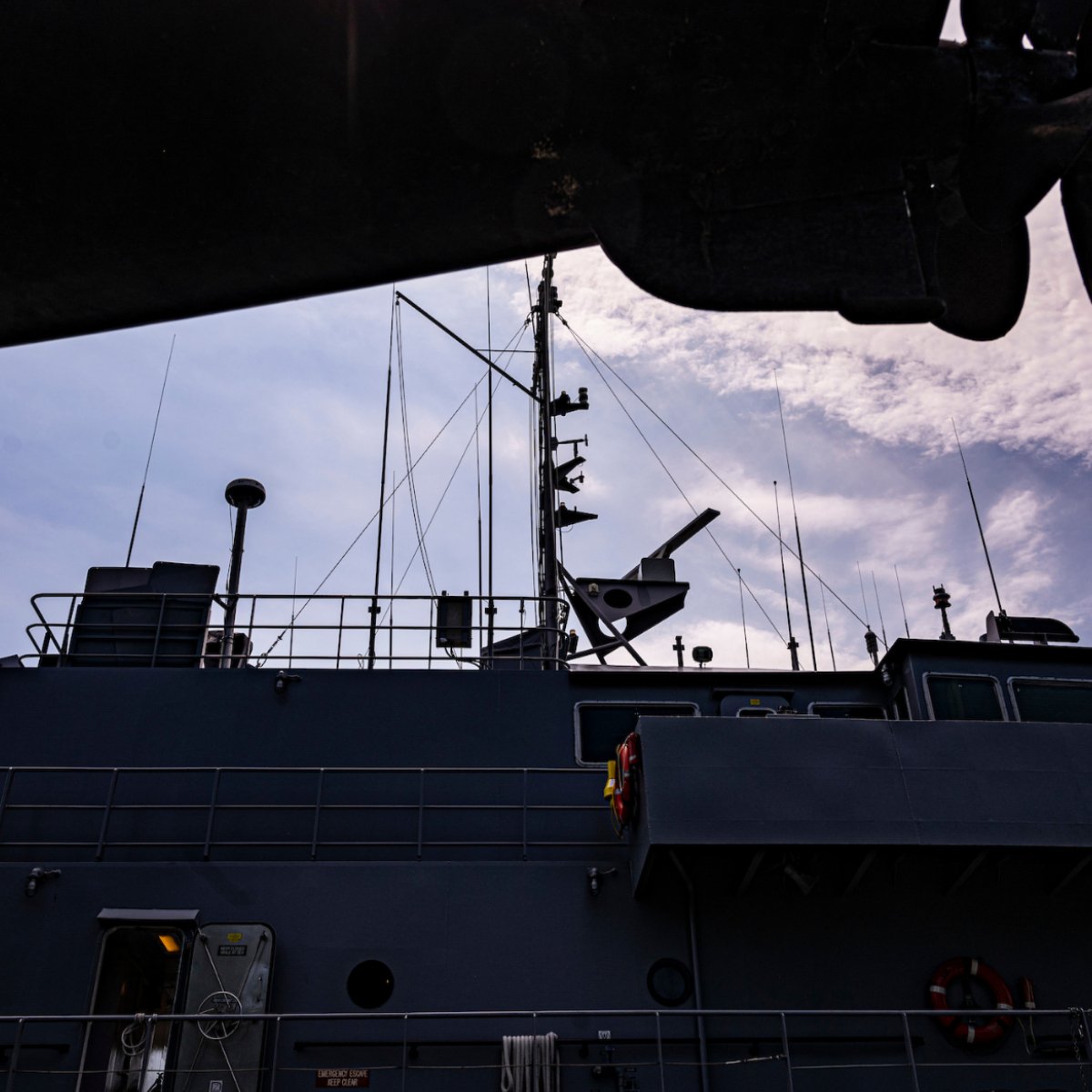
At the end of the nineteenth century, Colonel Robert Means Thompson commissioned Ernest Flagg, already a renowned architect, to create a design that would revitalize the Naval Academy. His ideas resulted in a Beaux-Arts style design that would make up the heart of the Naval Academy, with the Chapel serving as centerpiece of the design. The project expanded over ten years, and by the end, cost $10 million.
Admiral George Dewey laid the cornerstone for the new Chapel in June 1904, and the first service was held on May 28, 1908. Flagg's original plan laid the Chapel out in the shape of a Greek cross, with four equal transepts and an occupancy of 1,200. However, in 1938, the Chapel underwent renovations under architect Paul Philippe Cret. A nave was added that changed the shape of the Chapel to that of a Latin cross and raised the occupancy to 2,500.
Inside the Chapel
After the nave was added in 1939, the Chapel remained untouched until the 1980s, when the interior of the Chapel underwent renovations. The Chapel features many historical items and memorial windows. The prayer book used by Admiral David Farragut during the Civil War is on display in the rear of the Chapel. The most recognized stained glass window is the “Commission Invisible” made by Tiffany Studios, which depicts a newly graduated Ensign reading his commission in the shadow of his nation's flag.
The Naval Academy Chapel is home to the world’s largest drawknob organ. The original organ dates back to 1908. In 1940, Moller Organ Company was contracted to build a larger instrument to support music in the newly enlarged Chapel. The current instrument is controlled by two consoles, consists of both pipe and digital voices, and has over 15,000 pipes and 268 ranks. The organ is showcased in many Chapel weddings, memorials, and numerous musical concerts throughout the year.
On the left side of the nave there is a roped off pew in memory of prisoners of war and those missing in action. The POW/MIA candle is lit during all services, and the pew location is significant as it marks where the original chapel ended, and the expansion started.
On the lower level of the main Chapel, you will find St. Andrew and The Blessed Sacrament Chapels. These additional Chapels are used as worship spaces for Protestant and Roman Catholic communities in a more intimate experience.
The Naval Academy Chapel Dome
The focal point of the Chapel, the dome is a beacon across the Naval Academy campus. The original dome was clad in terracotta designs, resembling the look of a frosted wedding cake, but over time the terracotta absorbed moisture, and shattered with seasonal temperature changes. Leaks were mended and patched until a large chunk of masonry fell on the inside of the sanctuary. As a result, in 1928 the terracotta was removed and the dome was covered with a resistant copper sheathing.
Nearly 90 years later, the original copper remained, but preliminary repairs showed that there was more deterioration than anticipated. In 2018, a project was initiated to fully replace the entire copper covering, and is expected to be completed in 2021. The patinated copper of the dome was turned into heirlooms, which are available for purchase through the U.S Naval Academy Alumni Association.
The Chapel is the tallest building on the Naval Academy Yard, extending 210 feet from the main altar to the top of the Rotunda. It is also home to the Crypt of John Paul Jones.
Crypt of John Paul Jones
John Paul Jones is widely considered to be the father of the U.S. Navy. His leadership and influence significantly contributed to the Navy's founding and was instrumental in our victory in the War for Independence.
Related: Take a Tour of John Paul Jones’ Crypt
Jones died in 1792 and was buried in France, but in 1905, his body was brought to the United States aboard the USS Brooklyn, escorted by three other cruisers. Upon approaching the American coastline, seven U.S. Navy battleships joined the procession escorting Jones's body back to America. On April 24, 1906, Jones's coffin was placed in Bancroft Hall, following a ceremony in the new armory (Dahlgren Hall), presided over by President Theodore Roosevelt. In 1913, the Captain's remains were finally re-interred in a magnificent bronze and marble sarcophagus at the Naval Academy Chapel. His remains are currently under the Chapel in the Crypt.
The Chapel stands as the "architectural crown" of the Yard. The structure and campus were designated a National Historic Landmark in 1961. Its copper-clad dome, visible throughout the greater Annapolis area, serves as a point of pride and is symbolic of the vital role that moral and spiritual guidance plays in the development of Midshipmen into naval officers.






